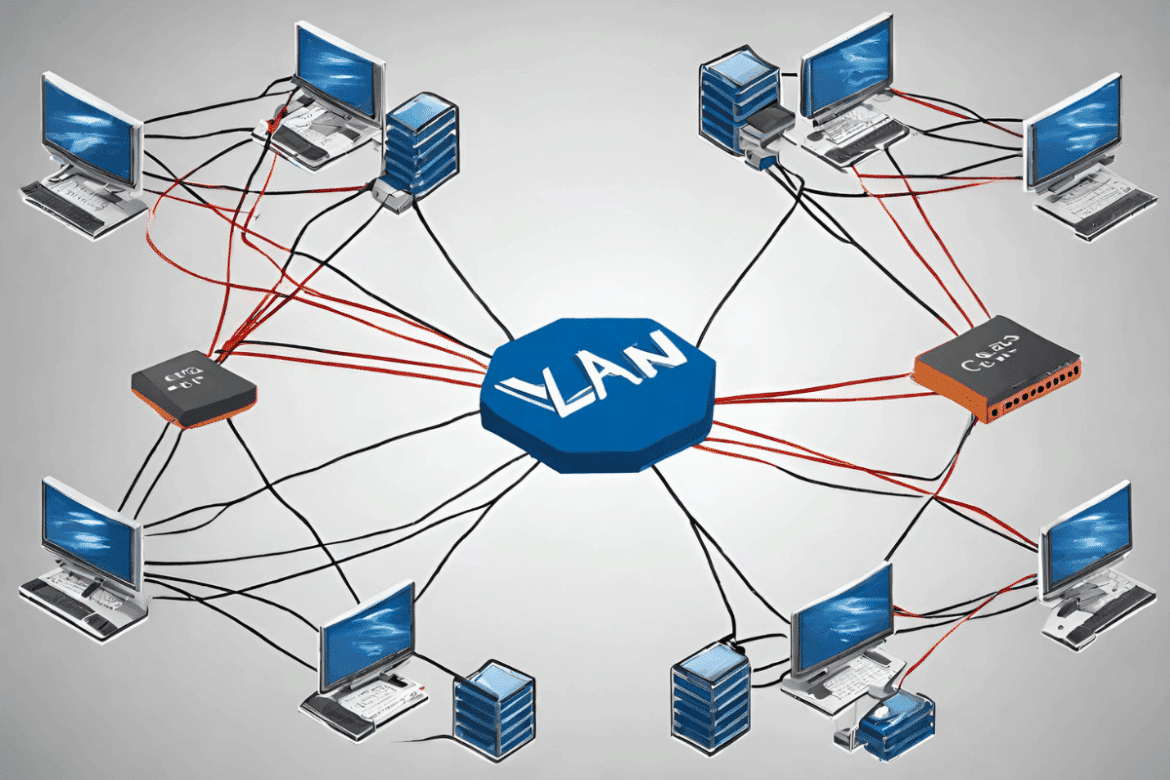Learn how network segmentation improves the security and efficiency of your IT infrastructure. Our guide explains the basics, advantages, and implementation strategies.
Network segmentation: What it actually is
Network segmentation is an essential part of modern IT security and network infrastructure. It refers to the process of dividing a larger network into smaller, isolated subnets. This division allows for better control over data traffic and increases security by making it easier to contain potential threats.
- The main motivation behind network segmentation is security optimization. By separating network segments, access to sensitive information can be restricted by granting access only to authorized users or systems.
- Another advantage of segmentation is improved performance. Since data traffic takes place within a smaller segment, the load on the entire network is reduced, resulting in faster and more efficient data transmission.
- Boundaries between segments are often implemented by firewalls or routers that control and monitor data flow. These devices play a crucial role in enforcing security policies and filtering unwanted access.
Why network segmentation is so important for security
In the digital age, where cyberattacks are becoming increasingly sophisticated, network segmentation provides an additional shield against threats.
- Network segmentation allows security breaches to be contained more effectively. If an attacker manages to penetrate one segment, access to other parts of the network remains limited, minimizing the overall damage.
- Isolating critical systems within their own segment makes it more difficult for hackers to move laterally within the network after an initial breach. This is particularly important for companies that work with sensitive data, such as financial or health information.
- Segmentation facilitates the implementation of zero-trust models, in which each user and device is granted only the minimum access rights required for their tasks. This significantly reduces the risk of internal misuse.
- Regular monitoring and logging of data traffic in each segment helps to detect and respond to unusual activity early on. This enables a faster response to potential threats and vulnerabilities.
Implement effective network segmentation
Implementing effective network segmentation requires careful planning and strategy.
- Start with a thorough analysis of your existing network to understand the various components and their communication patterns. This analysis forms the basis for identifying segmentation requirements.
- Define clear security policies for each segment based on the sensitivity of the data and applications it contains. These policies should regulate access and provide appropriate security mechanisms.
- Use appropriate technologies such as virtual local area networks (VLANs) and software-defined networks (SDN) to ensure flexibility and scalability in network segmentation. These technologies make it easier to manage and adapt segments as needed.
- Test segmentation regularly to ensure that all security measures are working as intended. Penetration tests and audits can help uncover vulnerabilities before they can be exploited.
Challenges and solutions in network segmentation
While the benefits of network segmentation are clear, its implementation often comes with challenges. From technical obstacles to organizational changes, there are often hurdles to overcome.
- One of the biggest challenges in network segmentation is the complexity of implementation. Dividing an existing network requires technical expertise and can be time-consuming, especially when older systems need to be integrated.
- Companies must also overcome cultural barriers, as the introduction of new security policies often meets with resistance. Training and awareness programs can help promote employee acceptance and understanding.
- Continuous maintenance is required to ensure that segmentation meets changing business requirements. Regular updates and adjustments are necessary to maintain the effectiveness of security measures.
- Another challenge is keeping track of the large number of segments and the devices they contain. Clear documentation and ongoing review are critical to ensuring the integrity of the network structure.

